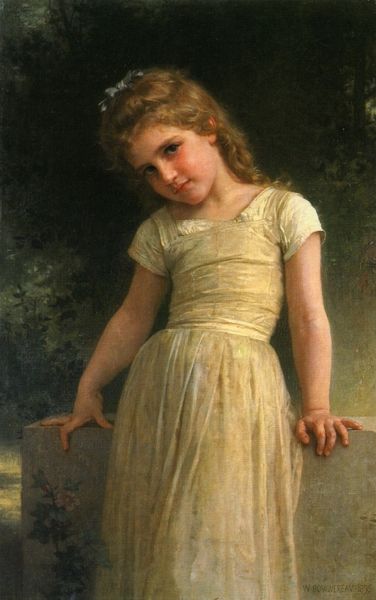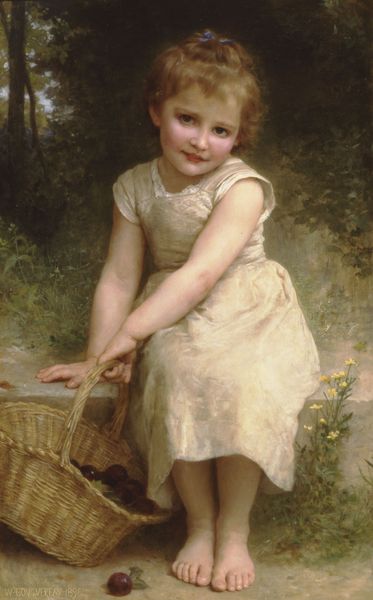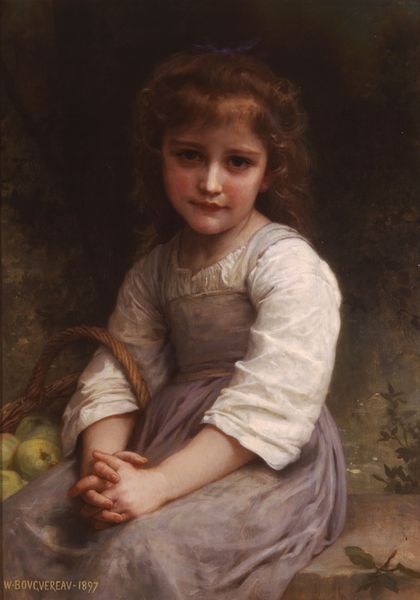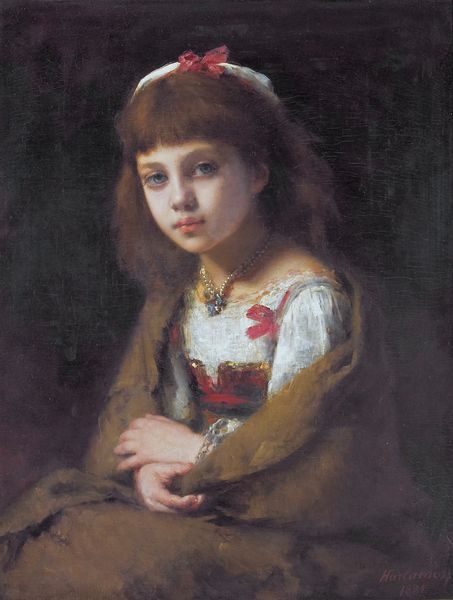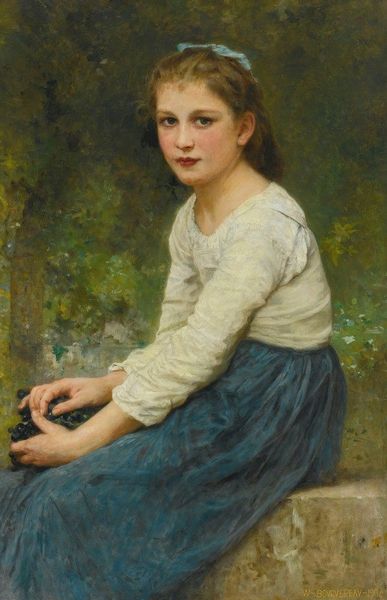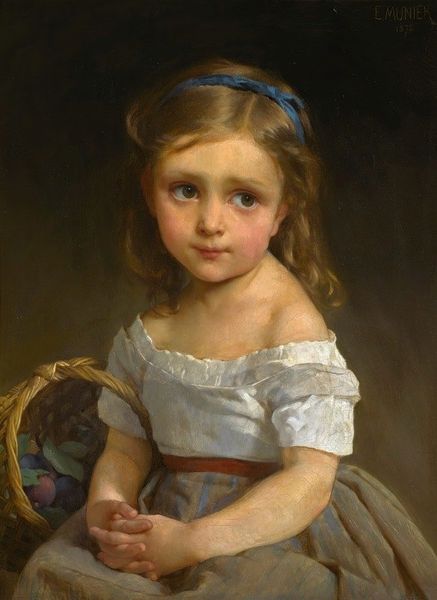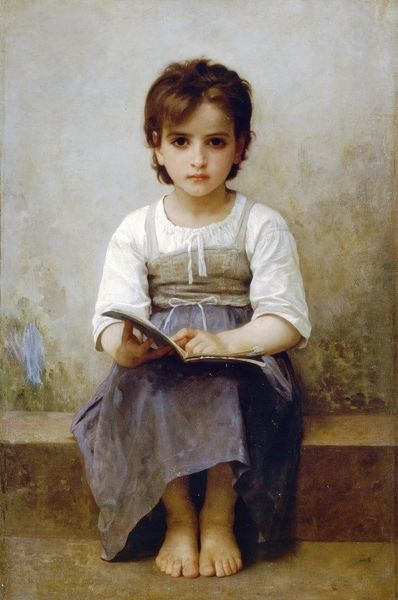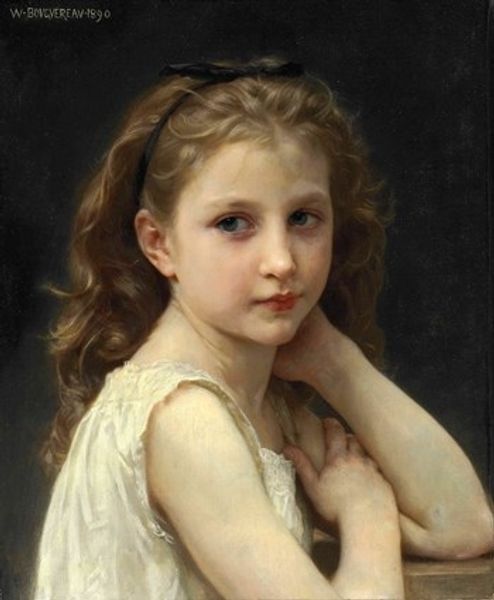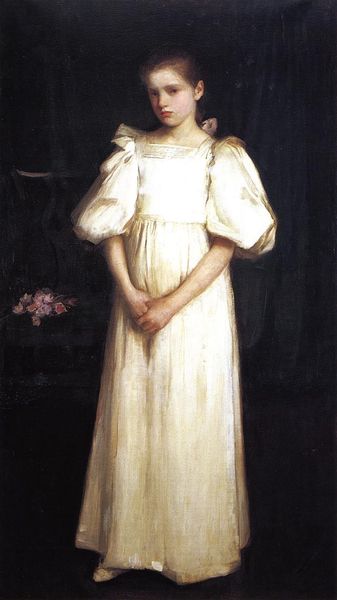
Dimensions: 74.5 x 138 cm
Copyright: Public domain
Curator: William Bouguereau’s “The Curtsey,” painted in 1898, presents a glimpse into the late 19th-century French countryside, rendered in his signature academic style. Editor: It’s so... luminous. It's like a daydream painted onto canvas. This girl is radiating innocence, even if there’s also a little melancholy in her eyes. Curator: It’s interesting you say that. Bouguereau's works, particularly his depictions of women and children, can be read as attempts to idealize innocence amidst complex socio-political shifts in late 19th century France, and a very distinct vision of femininity rooted in a romanticized past. Considering this in conjunction with the realities of the laboring classes, does that idealization then perpetuate social hierarchies by essentially presenting an unattainable aspiration? Editor: Wow, I was just thinking about how much I want to float through a sun-dappled meadow. But, yeah, it does make you wonder who this child really *is*, doesn’t it? She looks like she might be playing dress up; maybe pretending to be a lady. Curator: Exactly. Class performance becomes key. Note the bare feet, contrasting with what appears to be a finer garment. How are we to understand the image then? Bouguereau certainly had very specific intentions when composing a painting such as this one. Editor: Intention, yes, but then what does it stir in *me*, you know? I think about my own childhood fantasies. And look at the details here: the way she's carefully holding the hem of her dress, the blurry background… it evokes a memory that feels both universal and intensely personal. Curator: I agree that on one level, the painting speaks to collective memory through universal depictions. And yet, analyzing its cultural significance through the lenses of, say, gender studies or critical race theory encourages questions. Was there pressure imposed upon young girls, often from the working classes, to become figures of this idealized domesticity to which they might have limited real-world access? Editor: Well, whatever his intent, and however problematic it might seem now, he captured a fleeting feeling beautifully. It makes you ache for something… uncomplicated. Though perhaps such a thing never actually existed, you are right. Curator: It's precisely this tension between individual aesthetic experience and broader social critique that makes art so compelling. Thank you for providing a starting point to unpack such complexity in just a short discussion! Editor: Anytime! It’s always a thrill to see where a painting can take us!
Comments
No comments
Be the first to comment and join the conversation on the ultimate creative platform.

